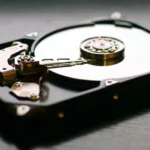By the end of 2018, the number of companies ignoring automated supply chain will drop drastically from 40% to 18%. The hints are clear – Supply Chain is the newest addition to the adapters of emerging technologies with Blockchain as the most appropriate starting point. That is, ‘Read Only’ access to an transaction record (“immutability”), over a distributed ledger with allowed sources across the supply chain is a promising solution to many of the complexities endured in routine Logistics. The trust generated within the network community, that the data isn’t falsified helps to highlight potential inconsistencies and make necessary changes.
Enhanced Everything – Transparency, Extensibility and Security
“The distributed and immutable nature of blockchain is what makes it an immensely relevant solution for the supply chain, not only does it offer transparency and security across channels but with the feature of smart contracts, it increases the factor of trust and leads to a better vendor-customer relationship.” says Kumar T, a blockchain expert with years of experience in the software industry.
A product’s lifespan in the supply chain can be documented and shared over the Blockchain network. With increased trust, corruption in the logistics space can be controlled while the manufacturers can be empowered to reduce fake recalls by sharing updated logs. Not to miss, more contributors from any touch point can be achieved. Noteworthy, shared ledger with predefined Smart Contracting can eliminate the need for internal audits, checks and reconciliations.
Capitalizing upon many more business perks like these, a few developments have steered significant enterprise traction. A swathe of opportunities towards specialized technology use cases in decentralized architecture is the rage.
Pallet RFIDs & Blockchain
Radio Frequency Identification tags are widely used in Logistics, especially for sharing live data about pallets in transit. These tags provide product information which further feed analytical systems for business processing. With Blockchain, unaltered data can be realized without additional costs and improvise the overall shipment tracking followed by enhanced traceability of fragile FMCG products.
Moreover, smart contracts automate the process to ensure that the partner offering optimal price and service gets the business. A smart contract then tracks status and final delivery performance. Another use case could be rewarding tenders transparently. The delivery data containing location and date is in higher demand by logistic partners bidding for delivery contracts. While the partner offering optimal price gets the contract, the subsequent performance is tracked on the go, and stored in the Blockchain network in a non-alterable manner.
The physical data (weather conditions, humidity, temperature, etc.) collected by RFID sensors can be productively used for predictive thinking and distributed across a decentralized network. Such real-time insights can be transmitted to a reader and make deliveries automated, error-free and speedy.
Cold Chain Monitoring
A continuous series of temperature controlled refrigerated production, storage and movement form the Cold Chain meant for temperature sensitive consumable products like Vaccines. When exposed to temperatures outside the recommended range (2-8 degree Celsius), Vaccines tend to lose potency. As per UNICEF, 38% of vaccines are wasted in developed countries because the shipment was accidentally exposed to unviable physical conditions. This not only means heavy losses for the industry but also a vast spectrum of the population being deprived of timely inoculation resulting in health hazards. Blockchain can assist by triggering a response action if a storage unit isn’t complying with the predefined conditions. This is powered by the unaltered data captured from RFID sensors as discussed earlier.
However, the retail inventory data is hardly accurate – not more than 65%
No matter revolutionary, the single ledger network will perform only if accurate, real-time information is fed. Such challenging dependency had the industry in splits if they were ready for Blockchain. That is because the currently available sales data doesn’t allow brands to follow-up with actual stock levels and thus end up having extra stock in warehouses. At times they either have too much in the stock or end up falling short on supply. As unclear understanding pushes them towards vague spending and product obsolescence, adverse business impacts are feared. Moreover, brands don’t have access to customer data beyond the retail store level which deprives them of valuable insights on end consumer usage.
Binding IoT with Blockchain – Resolving Erroneous Data Challenges
Leapfrogging conventional data streaming channels like RFID and Wi-fi, a new blend of IoT led Blockchain networks help solve these problems innovatively. As more enterprises explore this space, the finest instance so far is DiscoveryIoT – an IoT led supply chain network founded by Selvam VMS running through a system of decentralized nodes. That is, capturing accurate data from high performing IoT network and further using it for transparent sharing on the blockchain platform ensures instant and accurate transactions. Discovery does it by transmitting data from an IoT tag (called Cliot), to smartphones registered on the Discovery network. This data is recorded in a blockchain which is then processed at the edge and pushed to the cloud for analytics. Many more such developments are being conceived to bind together IoT and blockchain – two of the most impactful technologies.
What’s Ahead?
The exponential success of distributed ledger networks across the industrial landscape is an exciting phase to look forward to. However, astute hardware integration and smarter analytics are equally essential to unlatch true benefits. Hybrid implementation of technologies will help overcome critical hurdles, provided uncompromised enterprise contribution is available.








